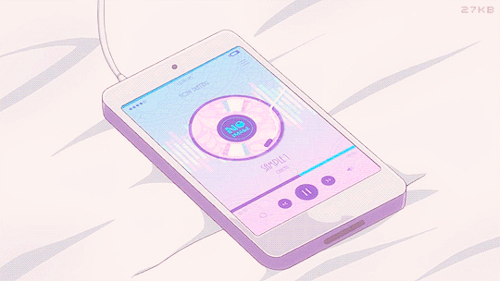conclusion - the future is fathomable
- faith kimberly

- May 5, 2018
- 3 min read
Updated: May 11, 2018

My inquiry into instapoetry’s appeal has turned me into a digi-detective, scrolling, lurking, and searching for reasons why the verse remains inescapable. So far, I have described the genre’s spreadable visual and verbal qualities, unearthed its Imagist roots, and discussed political and literary themes. As my scope expanded, I delved into related remixes, analyzed platform convergence, and examined the line between critique and cyberbullying. Along the way, I’ve stopped to highlight a few authors, detractors, and memers, evaluating their unique motivations. Since I am not a literature scholar, I have avoided the obvious yet unanswerable “is instapoetry ‘real’ poetry?” question; I will leave that up to you, my savvy reader. But as a communications student, I am well-equipped to hypothesize about poetry’s ongoing online evolution.
Predicting the future – be it digital or terrestrial – is risky, futile, and often embarrassing business. That said, web traffic, publishing trends, and ongoing cultural buzz provide solid data to extrapolate from. Regardless of its literary merit, insta-poetry it has re-invigorated and mainstreamed a genre once confined to highbrow book clubs and English departments. Much to the intelligentsia’s chagrin, ‘traditional’ poetry’s public visibility fell throughout twentieth century. The Survey of Public Participation in the Arts, for instance, reported in 2015 that the share of Americans who had read at least one work of poetry in the previous year had dropped from 17% in 1992 to 6.7% in 2012. Then came Rupi Kaur and her cohorts.
In only three years, poetry has re-gained its clout and cool factor. Twelve of the top 20 bestselling poetry authors in 2017 were “Instapoets,” creators who combine their original poetry with images, composing shareable posts on Instagram, Twitter, Tumblr and other social media platforms. Kaur and r.h. Sin sit above Maya Angelou and Mary Oliver on the Amazon rankings, filling many the aesthetic bookshelf. Unlike their predecessors, these virtual authors take a do-it-yourself approach to book-printing. The rise in independent and indie publishing has correlated with the insta-poetic boom, and industry big dogs are taking note. Kirsty Melville, president of McMeel, likens digital verse’s real-world crossover to the initial coloring book craze: “as a publisher, we go where the culture goes…tapping into the sense of what might work in the context that we’re in.” If the insta-poets’ goal to was to be legitimatized by institutions – be it universities or publishers - that may have once dismissed them, they have exceeded their wildest dreams.
With all eyes on the millennial wordsmiths, they are poised to take the literary sphere by storm and click. To maximize accessibility and authenticity, it can be assumed that insta-poetry will focus on hot-button issues once passed over in favor of incomprehensible metaphors, befuddling structures, and mind-numbing abstractions. During a symposium at Cambridge’s Grolier Poetry Book Shop, Professor Robert Archambeau predicted that due to its amplification of previously unheard voices, the genre will become ubiquitous:
There is no mainstream America, not anymore. There are only margins, or identity groups—and each identity group has its politics. And along with these identity politics come a myriad of identity poetics: poetry that sets out to articulate ethnic identity, gender identity, racial identity, disability identity, generational identity, regional identity, or even professional identity. Sometimes this poetry remains invisible outside of its micro-community, sometimes it is taken up by and celebrated in the institutions of the poetry world…[it will] grow with the increasing diversity of America, and the need for new groups to claim their place and articulate their values. It is a far cry from art for its own sake, this identity-articulation, and in some sense more vital for having greater reach…let this latest thesis about the future of poetry warm your heart (2014).

Archambeau’s take is distinctly post-millennial, complete with jargon out of the typical progressive rally. But despite their current-year salience, his predictions are not entirely new. I leave you with a similar calculation from Henry Dobson’s On The Future of Poetry, published in 1921:

So, dear reader, I urge you to peruse or pen some instapoetry - a genre that aspires to be common, but never commonplace; or to put it in internet terms, relatable, but never basic.





Comments